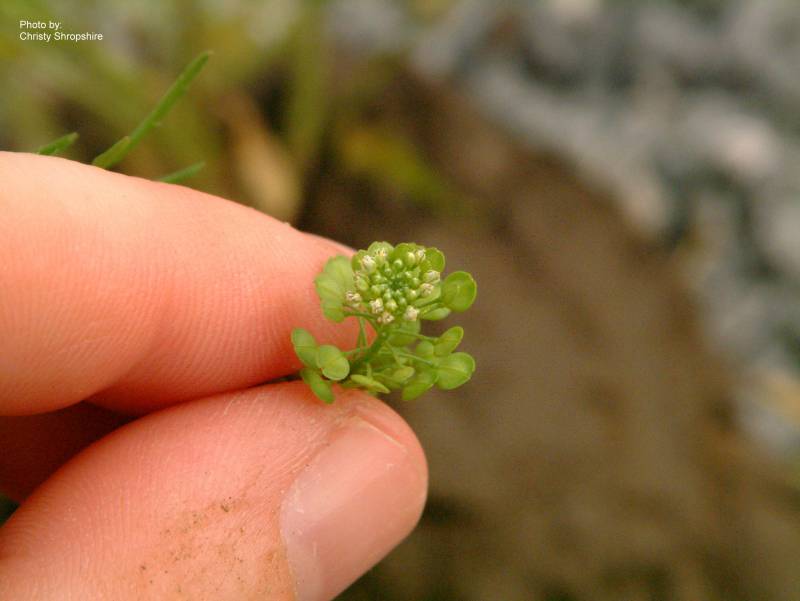Hosted by the University of Washington Herbarium, Burke Museum
Publication: Index Seminum (Göttingen). 1832: 4. 1832.
Origin: Native
Herbarium search: CPNWH
Notes: FNA: "North American records of Lepidium apetalum Willdenow mostly represent misidentifications of L. densiflorum. The latter has obovate fruits widest beyond the middle, whereas L. apetalum has elliptic fruits widest at the middle.
The number and limits of the varieties recognized in Lepidium densiflorum, as well as the characters used to delimit them, vary among authors (A. Thellung 1906; C. L. Hitchcock 1936; G. A. Mulligan 1961; R. C. Rollins 1993; N. H. Holmgren 2005b). The variation almost always does not correlate with geography, and the recognition of varieties in this species is neither practical nor very useful. All of those authors admitted that these varieties are "very weak at best" (Rollins, p. 554). Of them, perhaps var. pubicarpum (including var. elongatum) might merit recognition. It is distributed in almost all of the Mountain and Pacific states and is distinguished from the other varieties solely by the presence of trichomes or minute papillae on the fruit valves. The density of these trichomes ranges from moderate and covering the entire valve surface to very sparse and represented by individual papillate trichomes restricted to the valve margin. Furthermore, the length of these trichomes may vary from ca. 0.01 to 0.3 mm. In some species (e.g., L. dictyotum) both glabrous- and pubescent-fruited forms occur, yet none of the above authors gave formal recognition to both forms. It is not known if both glabrous and puberulent fruits occur within the same population in L. densiflorum. The species is autogamous, but nothing is known about the rates of gene flow between and within populations."
Rollins, 1993: "The original area of L. densiflorum sens. lat. is impossible to know because of its weedy tendencies. Many of the localities where it now occurs are probably outside of its native range."
The varieties of L. densiflorum are poorly defined and may not be taxonomically distinct.
Last updated 3/28/2022 by David Giblin.

